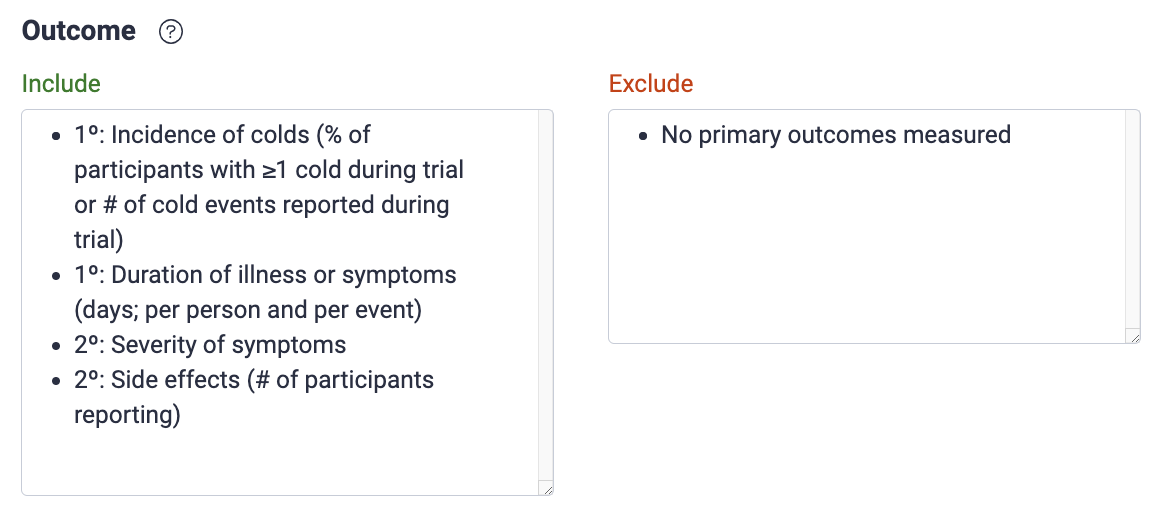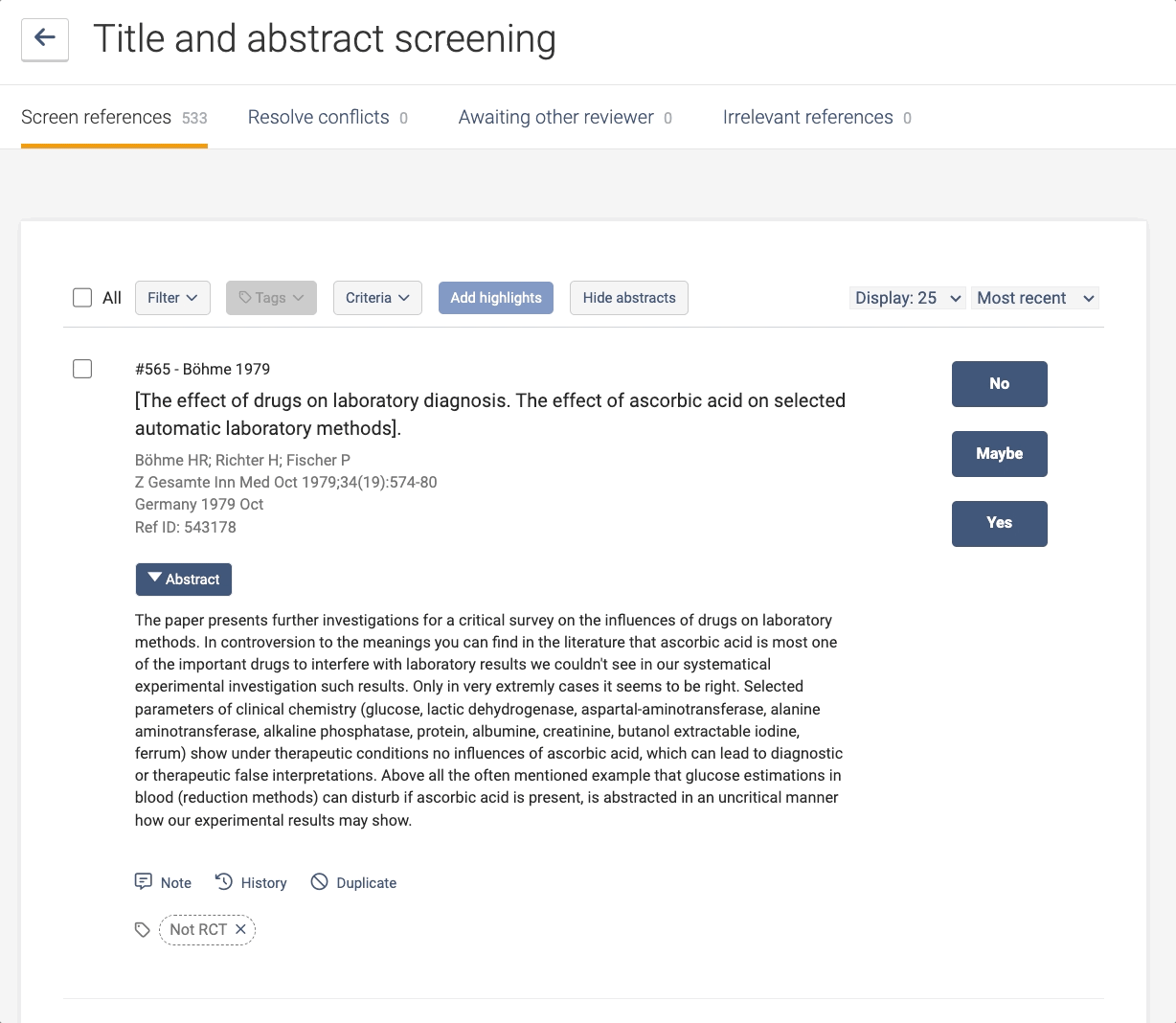Setting up a review
How to create and manage eligibility criteria
Updated 2 weeks ago
Overview
Clearly defining your review's eligibility criteria is an important part of conducting a high-quality systematic review.
By saving your eligibility criteria in Covidence, you ensure a consistent framework for your screening process, promoting both clarity and efficiency among your review team.
The new Eligibility Criteria feature in Covidence enables you to outline your eligibility criteria in a structured format, aligned with the well-recognized PICO model (Population, Intervention, Comparator, Outcome), along with Study Characteristics and any other additional criteria. Here's a guide on how to set up these criteria.
On the Settings page, select the tab for 'Eligibility Criteria'. You can specify the inclusion and exclusion criteria for your review so that you can view it whilst screening.

The Eligibility Criteria page now contains separate sections for entering inclusion and exclusion criteria for each of the following components:
Entering your criteria
Population
The group(s) of individuals or participants that are the primary focus of the study. These groups are often characterized by specific demographic or clinical characteristics. Examples could include: "Adults over 18 years old with knee pain" or "Children under 5 years old diagnosed with asthma".

Intervention / Exposure
This pertains to the specific treatment, exposure, or assessment being evaluated in your review.
In intervention-based studies, this typically refers to a specific treatment or therapy that the study subjects are receiving, such as "Steroid injections for pain management".
In observational studies or those examining correlations, this might refer to an exposure or condition that the study subjects are undergoing or experiencing, like "Exposure to second-hand smoke"

Comparator / Context
The comparator or context is the standard or reference point against which the intervention or exposure is being evaluated. This can take many forms, depending on the study design:
For intervention-based studies, this often involves comparing the effect of the intervention to another treatment, a placebo, or a different dose or frequency of intervention. For example, "Physical therapy compared to surgery for knee pain."
For observational or epidemiological studies, the context could refer to a comparison population or an unexposed group. For instance, "Non-smokers as a comparison group for those exposed to second-hand smoke."

Outcomes
Outcomes are the specific results or effects that are measured or assessed as a result of the intervention or exposure. These can vary widely depending on the research question and study design:
In intervention-based studies, outcomes often focus on the efficacy or safety of the intervention, such as "Improvement in knee pain following steroid injections."
In observational or epidemiological studies, outcomes may relate to the effect of an exposure on a specific health outcome, like "Incidence of lung cancer in those exposed to second-hand smoke."
In health services research or policy studies, outcomes might relate to system-level changes or economic outcomes, like "Changes in healthcare utilization following a policy change" or "Cost-effectiveness of a new intervention."

Study Characteristics
This encompasses the specifics of the research methodology used to answer the research question. This includes the type of study design (randomised controlled trials (RCTs), observational studies, cohort studies, case-control studies, etc.), but can also include other features like:
Study setting: For example, "Studies conducted in a hospital or clinical setting", "Community-based studies", or "Online or remote studies".
Study timing or duration: For example, "Longitudinal studies with a follow-up period of at least one year."
Publication status or date: For example, "Peer-reviewed studies published after 2000.

Other
This section is for any other type of inclusion or exclusion criteria that doesn't fit into the above categories. For example, if you're using the SPIDER (Sample, Phenomenon of Interest, Design, Evaluation, Research type) framework for qualitative and mixed-methods reviews, you may have additional criteria related to the nature of the phenomenon being studied or the type of evaluation used.
Covidence expert tip: criteria saved prior to 25 July 2023 have been transferred into the "Other" field.
Update your existing criteria into PICOS structure to speed up your screening!
Remember to click on the 'Save' button after entering your criteria. Your eligibility criteria will be readily accessible during the screening process for reference, ensuring alignment of your screening decisions with your predefined criteria.
Viewing your criteria during screening
Once you've added inclusion and exclusion criteria you can use the Criteria button at the top of the screening page to view or hide the inclusion and exclusion criteria whilst you are screening.


